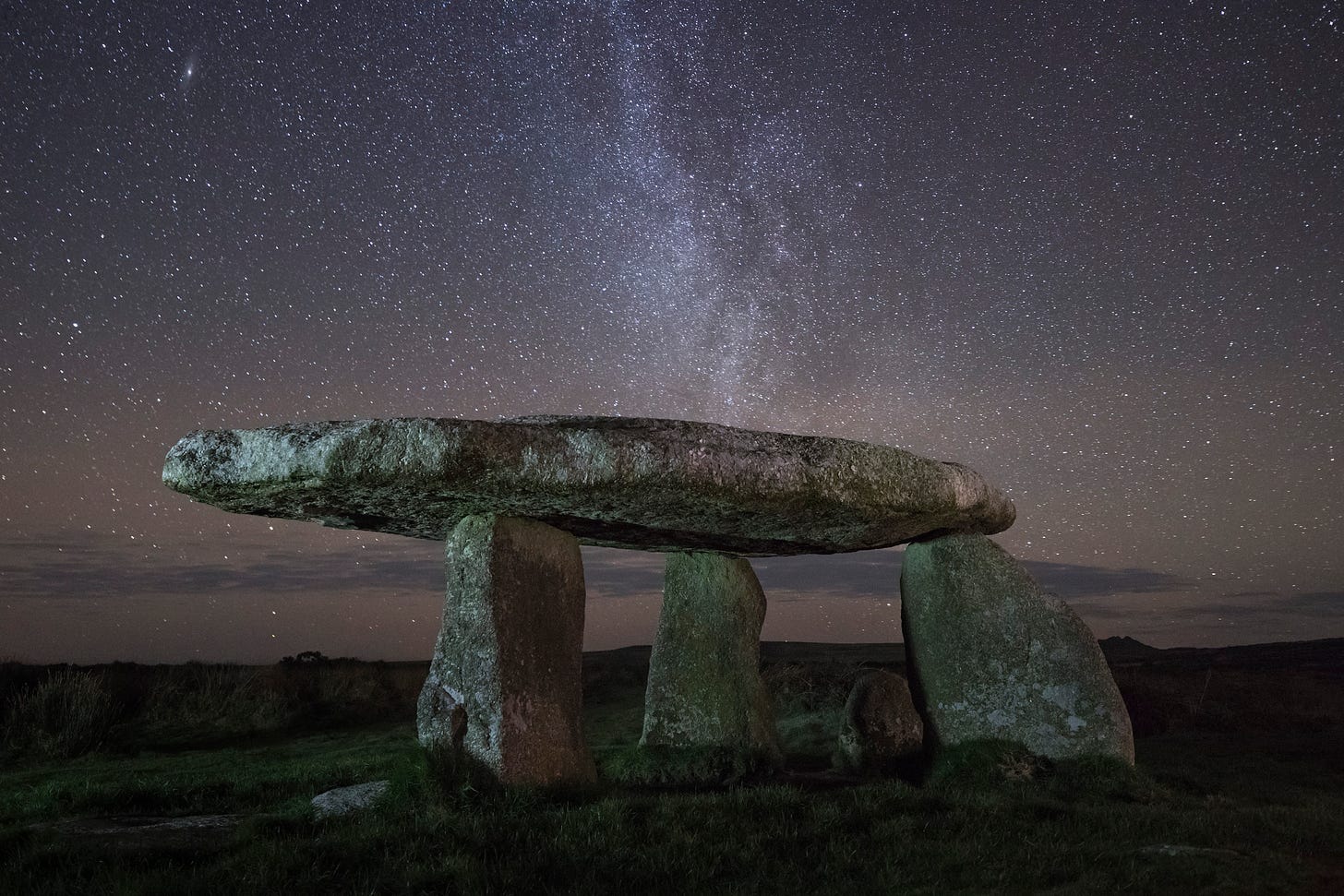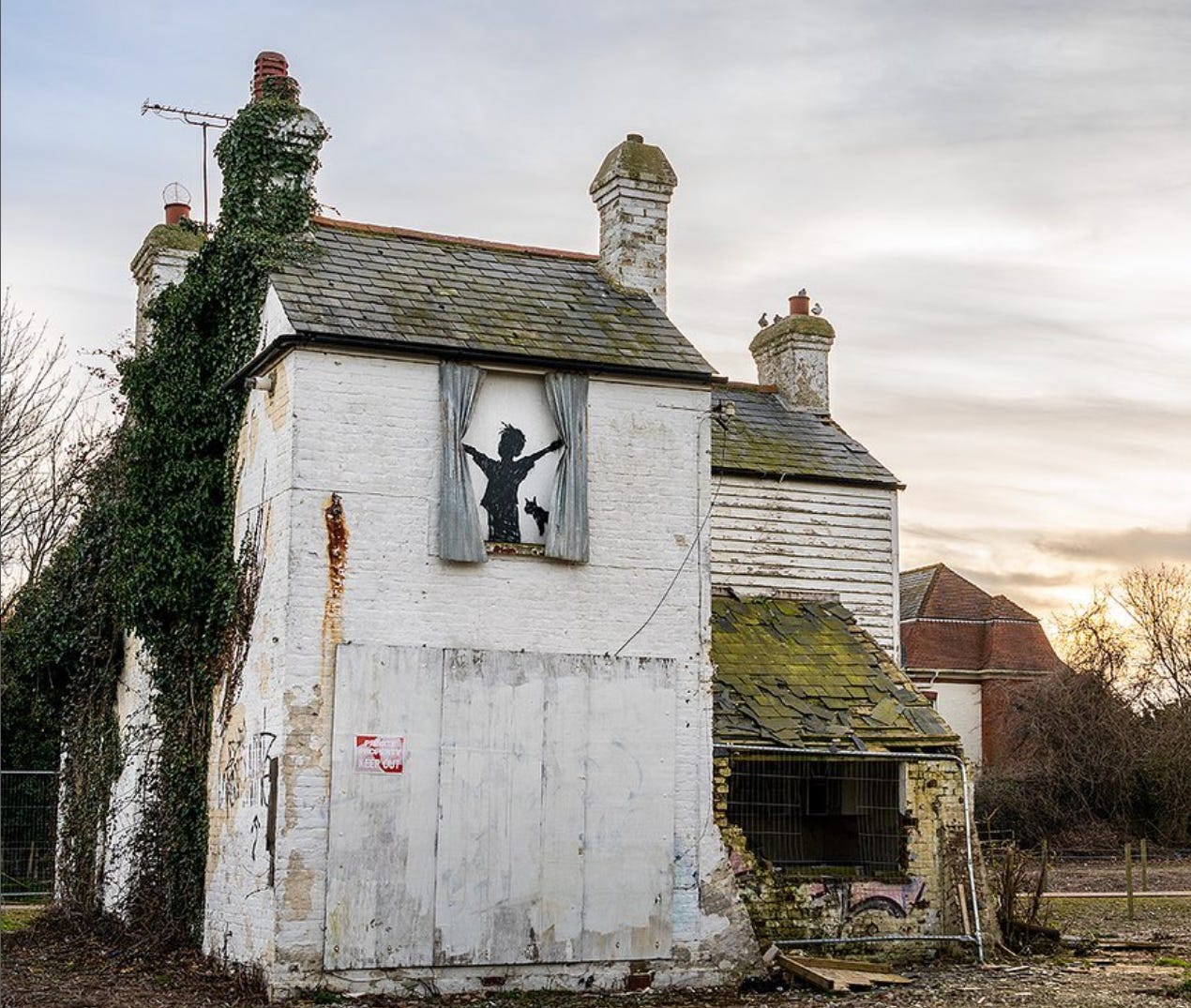Hey everyone! Hope you all have had a lovely week and weekend. I’m in Texas visiting my mom right now and it’s been quite a week. She’s settling into a new home and there’s so much unpacking to do. It feels a bit like rediscovering some of my own personal history.
What have you been up to this weekend?
This week, in history acting unruly…
For centuries we’ve known that the Roman built an amphitheater in Londonium—modern-day London. But archaeologists couldn’t find a trace of it. Then in a random spot check under the town hall in the financial district, evidence emerged.
A 500-year-old farmhouse with a mural by Banksy in it has been demolished. Morning Is Broken, 2023 was not known to be Banksy’s work until after the farmhouse was demolished. Last month, another mural by Banksy, Valentine’s Day Mascara was destroyed.
Speaking of artists, an incredibly rare Brueghel the Younger painting was found behind a door in northern France. It had been in the family since 1900, but no one realized what they had until recently.
Ramses II has intrigued historians for centuries. He ruled for 70 years, leaving behind incredible building works and accomplishments. But he also had 100 children, which led to instability in his dynasty.
Today the Washington Monument is a symbol of Washington, D.C., but for a while, it was a national embarrassment.
Archaeologists found an enormous Viking ship buried just six inches beneath the surface of a Norwegian potato field, and it has a lot to tell us about Viking burial rituals.
Speaking of the Vikings—did they make it all the way to North America? Here’s what we know so far.
Britain has established a new ‘dark sky’ park, where we can see the skies the way the ancient peoples who built structures like Stonehenge saw them. West Penwith Dark Sky Park in Cornwall features 700 such structures, some of which are 6,000 years old. Honestly, I’m dying to go to this.

Lanyon Quoit in Land's End, Cornwall, England. Source. The world tried to kill Violet Jessup several times, but she always prevailed. Remembered as “Miss Unsinkable,” she survived several childhood illnesses plus the sinking of three separate ships—including the Titanic.
This interactive map at National Geographic shows a rendering of the site that may contain Jesus’s tomb.
If you’re interested in the lives of Medieval women, this book by Eleanor Janega (and its attendant review) might be right up your alley.
Pirates didn’t just operate in the Caribbean. There were a few pirates operating alone Africa’s Eastern Coast and the Indian Ocean who made off with enormous treasures, including the Mughal emperor Aurangzeb’s treasure ships.
Speaking of pirates, they operated in the Mediterranean for centuries. A few even reportedly kidnapped a young Julius Ceasar.
What do you know about the 1925 Serum Run?
Indigo is making a comeback in South Carolina. The plant (and therefore the artistic practice) disappeared after the US Revolutionary War, but it’s seen a revival lately.
In 1995, a Vermeer retrospective exhibit exploded into worldwide popularity. Today, the curator talks about what went into planning it.
We’re learning more about the Denisovans, slowly but surely. And this molar, found not too far from other Denisovan fossils, is both helping and complicating the process.
Who really was Robin Hood? The answer is more complex and less understood than you think.
A history mystery! 10,000 years ago, a woman carried a toddler through the rain across what is, today, Mexico’s White Sands National Park. A wooly mammoth and a giant sloth crossed her path. She then retraced her footsteps, without the toddler. But what happened to the child?
Are we in a new Age? If so, should we call it the Anthropocene—the Age of Man?
Eel reproduction is, apparently, a huge mystery. And considering that they’re endangered, this is kind of a problem.
Argentina’s ongoing quest for truth, justice, and memory includes this story about Adolfo Scolingo’s confession to his part in the infamous ‘death flights’ of the Brazilian dictator Leopoldo Galtieri.
COVID-19 lockdowns are still happening in China, and the lack of proper information entering the city is part of why.






Fascinating links you've posted! Good luck with your unpacking